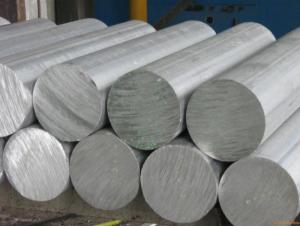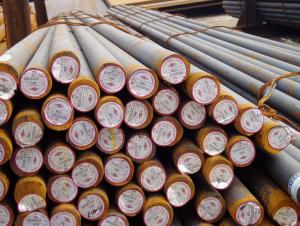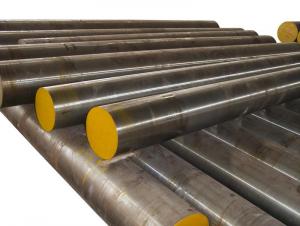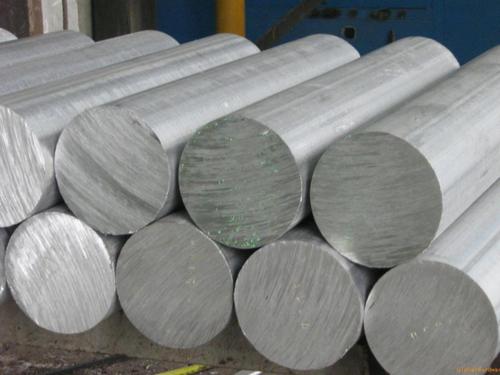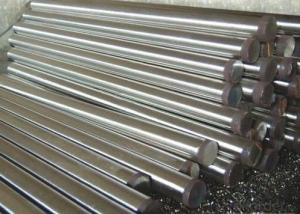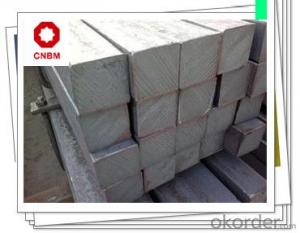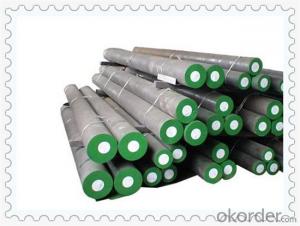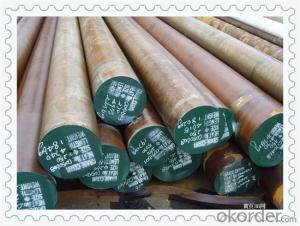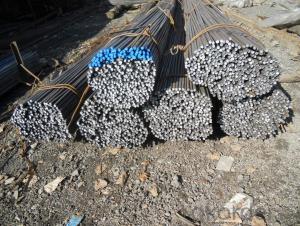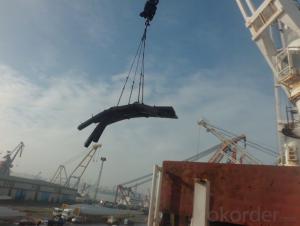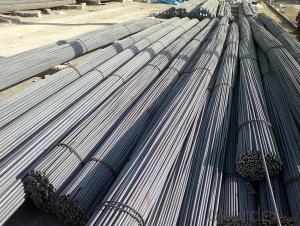hot rolled Round BAR
- Loading Port:
- China Main Port
- Payment Terms:
- TT OR LC
- Min Order Qty:
- -
- Supply Capability:
- -
OKorder Service Pledge
OKorder Financial Service
You Might Also Like
used in construction and a large number of architectural and engineering structures.
4. Some special round bar can be used for automotive engine and transmission components, bearing, rails machine tools and wire rope.
Packaging & Delivery of American Standard Round Bar
Packaging Detail: All goods are packed in bundle with steel strips and shipped by break bulk vessel or container (depend on target market and different ports)
Delivery Detail: 45 days
Trade terms: FOB, CFR, CIF
MOQ: 25 tons per specification; we can negotiate the quantity if the specification is normal or we have stock of one specification.
Weight: Theprice invoicing on theoretical weight basis or actual weight basis depends on customer’s request.
Shipment: The shipment of bulk break or container is depends on customer’s request and the situation of the port of destination.
Documents given: Full set of original clean on board bill of lading; Original signed commercial invoice; Original packing list; Policy of insurance; Certificate of origin and what the target market needs.
Production Flow of American Standard Round Bar
The common processes are preheated forging quenching, dual refinement solution process, cooling quenching and isothermal quenching. We use heat treatment for dual refinement solution process.
Quality Assurance of American Standard Round Bar
1. We will strictly inspect our production that we sold according to the customer’s request.
2. Quality should be in conformity with the specification of the manufacturer. Quantity and packing conditions should be in conformity with the term in the contract.
3. Should the packing found damaged, the buyer has the right to claim to the seller.
- Q: What is the maximum carbon content allowed for steel round bars?
- The maximum carbon content allowed for steel round bars typically ranges from 0.25% to 0.30%.
- Q: How do you calculate the fatigue strength of a steel round bar?
- Various methods can be employed to calculate the fatigue strength of a steel round bar. For instance, the stress-life (S-N) curve approach or the strain-life (ε-N) curve approach can be utilized. The stress-life (S-N) curve approach entails plotting the stress amplitude (S) against the number of cycles to failure (N) on a log-log scale. By subjecting multiple specimens of the steel round bar to different stress levels and measuring the number of cycles to failure for each stress level, the S-N curve can be obtained. The fatigue strength of the steel round bar can then be determined by identifying the stress level at which the desired number of cycles to failure is achieved, commonly known as the endurance limit. On the other hand, the strain-life (ε-N) curve approach involves plotting the strain amplitude (ε) against the number of cycles to failure (N) on a log-log scale. Similar to the S-N curve approach, multiple specimens of the steel round bar are subjected to different strain levels, and the number of cycles to failure is recorded. By utilizing the strain-life curve, the fatigue strength can be determined by identifying the strain level corresponding to the desired number of cycles to failure. It should be emphasized that calculating the fatigue strength of a steel round bar necessitates conducting fatigue tests on representative specimens under controlled conditions. These tests involve subjecting the specimens to cyclic loading, typically in the form of tension-compression cycles, and recording the number of cycles to failure. The data obtained from these tests is then utilized to construct the S-N curve or the ε-N curve, which offers valuable insights into the fatigue behavior and strength of the steel round bar.
- Q: Can steel round bars be used for making shafts?
- Steel round bars are capable of being utilized for the production of shafts. Owing to their exceptional strength and durability, steel round bars find widespread use in various industries for the purpose of shaft fabrication. They possess the ability to endure heavy loads, withstand forces that induce bending and twisting, and exhibit remarkable performance in applications where power transmission or rotational movement is required. Moreover, steel round bars offer commendable machinability, enabling effortless shaping and formation into shafts of diverse sizes and dimensions. Furthermore, heat treatment can be employed to augment the strength and hardness of steel round bars, rendering them even more suitable for shafts operating in demanding environments. In conclusion, steel round bars are an immensely popular choice for shaft production due to their inherent properties and unwavering reliability across a multitude of industrial applications.
- Q: Can steel round bars be used for making shock absorber components?
- Absolutely! When it comes to constructing shock absorber components, steel round bars are a fantastic choice. The reason being, steel possesses exceptional qualities including robustness, longevity, and the ability to withstand wear and tear. By utilizing steel round bars, it becomes possible to craft a multitude of shock absorber elements, including piston rods, mounting brackets, and tube bodies, through either machining or forging methods. The incorporation of steel guarantees that these components can endure the immense pressures and forces linked to shock absorption, thereby ensuring vehicle stability and seamless functionality.
- Q: Can steel round bars be used in the production of bearings?
- No, steel round bars are not typically used in the production of bearings. Bearings are usually made from specialized materials such as stainless steel, bearing steel, or other alloys specifically designed for their load-bearing properties and ability to reduce friction.
- Q: How do you calculate the weight of a steel round bar based on its density and dimensions?
- In order to determine the weight of a steel round bar, one must possess knowledge of its density and dimensions. The weight can be calculated using the formula W = V x D, where W represents weight, V represents volume, and D represents density. Firstly, it is necessary to ascertain the volume of the round bar. The volume of a cylinder can be calculated using the formula V = πr^2h, where V represents volume, π is a constant (approximately 3.14159), r represents the radius of the round bar, and h represents the height or length of the round bar. In the event that one possesses the diameter of the round bar instead of the radius, the radius can be determined by dividing the diameter by 2. Once the radius is determined, it can be substituted into the formula along with the height of the round bar to calculate the volume. Subsequently, knowledge of the density of the steel is required. The density of steel is typically measured in grams per cubic centimeter (g/cm^3) or kilograms per cubic meter (kg/m^3). It is imperative to ensure that the units for both density and volume are consistent. If the density is given in g/cm^3, the volume must be converted from cm^3 to m^3 by dividing it by 1,000,000. Finally, the weight can be calculated by multiplying the volume by the density. If the density is provided in kg/m^3, the weight will be in kilograms. If the density is provided in g/cm^3, the weight will be in grams. Conversion to other units can be achieved by utilizing appropriate conversion factors. It is crucial to verify all calculations and maintain consistency of units throughout the entire calculation process.
- Q: How are steel round bars used in the manufacturing of valves and fittings?
- Steel round bars are used in the manufacturing of valves and fittings as they provide the necessary strength and durability required for these components. The round bars are first machined and shaped into various parts of the valve or fitting, such as the body, stem, or disc. The steel round bars are then further processed through cutting, drilling, and threading to create the desired shape and size. This ensures that the valves and fittings can withstand high pressure, temperature, and corrosive environments, making them suitable for industrial applications.
- Q: Use of stainless steel round bar
- Stainless steel round bar is a kind of long material, and it is also a kind of bar. The so-called stainless steel round bar refers to the cross section is even round long material, generally about four meters long. It can be divided into light and black. The so-called light circle, refers to the smooth surface after processing and quasi rolling; and the so-called, refers to the surface of the black, coarse, and direct rolling.
- Q: What are the advantages of using nickel-cobalt alloy steel round bars?
- There are several advantages of using nickel-cobalt alloy steel round bars: 1. High Strength: Nickel-cobalt alloy steel round bars offer exceptional strength and toughness, making them suitable for applications that require heavy-duty performance. The addition of nickel and cobalt enhances the overall strength and hardness of the steel, allowing it to withstand high stress and pressure. 2. Corrosion Resistance: Nickel-cobalt alloy steel possesses excellent resistance to corrosion and oxidation. This makes it a preferred choice in environments where exposure to moisture, chemicals, or harsh weather conditions is common. The alloy's resistance to corrosion ensures durability and longevity, reducing the risk of rust or deterioration. 3. Heat Resistance: Nickel-cobalt alloy steel round bars exhibit superior heat resistance properties. They can withstand high temperatures without losing their structural integrity, making them suitable for applications involving heat treatment, such as forging or welding. This heat resistance ensures that the bars maintain their mechanical properties even under extreme thermal conditions. 4. Wear Resistance: The combination of nickel and cobalt in the alloy enhances its wear resistance. Nickel-cobalt alloy steel round bars exhibit excellent resistance to abrasion, erosion, and fatigue, making them ideal for applications in industries such as mining, construction, and automotive, where wear and tear are common. 5. Machinability: Nickel-cobalt alloy steel round bars are relatively easy to machine and fabricate. This makes them suitable for various manufacturing processes, including cutting, drilling, and shaping. The alloy's machinability allows for efficient production and reduces manufacturing costs. 6. Versatility: Nickel-cobalt alloy steel round bars have a wide range of applications due to their versatile properties. They can be used in industries such as aerospace, marine, oil and gas, automotive, and power generation. The alloy's combination of strength, corrosion resistance, and heat resistance makes it adaptable to diverse environments and demanding applications. In summary, nickel-cobalt alloy steel round bars offer numerous advantages, including high strength, corrosion resistance, heat resistance, wear resistance, machinability, and versatility. These properties make them a preferred choice for various industrial applications, ensuring durability, reliability, and performance.
- Q: What is the maximum length available for steel round bars?
- The maximum length available for steel round bars can vary depending on the supplier and the specific requirements, but typically it can range from 12 to 24 feet.
Send your message to us
hot rolled Round BAR
- Loading Port:
- China Main Port
- Payment Terms:
- TT OR LC
- Min Order Qty:
- -
- Supply Capability:
- -
OKorder Service Pledge
OKorder Financial Service
Similar products
Hot products
Hot Searches
Related keywords
